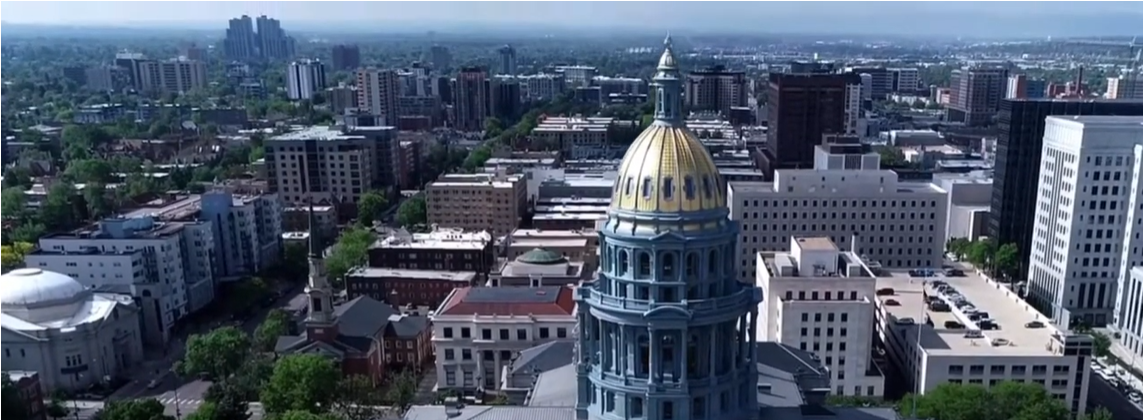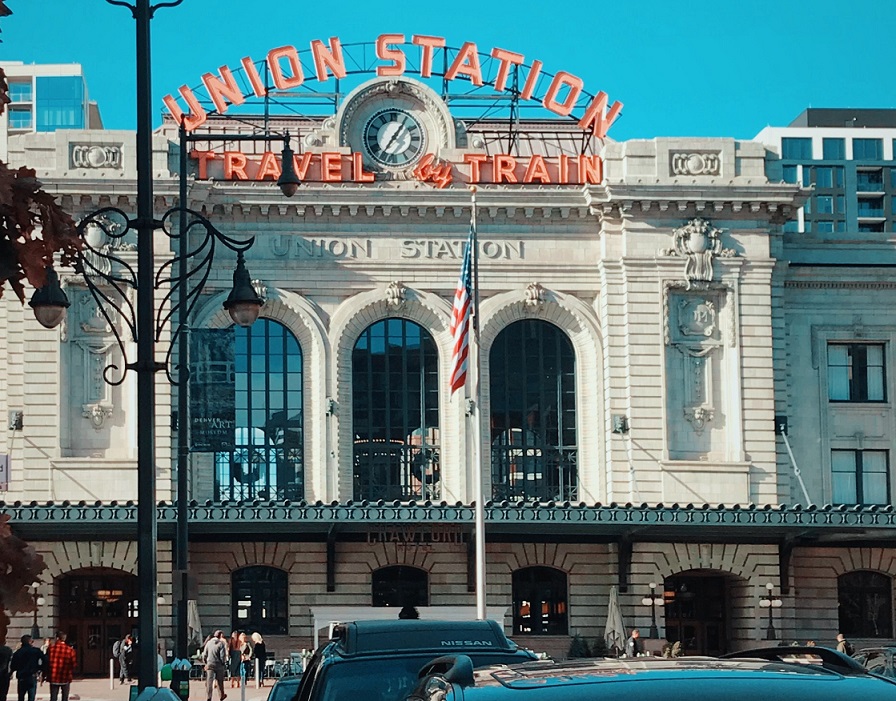Denver, Colorado, experienced dramatic boom and bust cycles in the 19th century that mirrored the volatile economic and social landscape of the American West. As a frontier city founded during the Colorado Gold Rush, Denver’s fortunes rose and fell with the ebb and flow of mining, railroads, and agricultural industries. This article delves into the dynamic boom and bust cycles that shaped Denver’s early history, exploring the catalysts behind each cycle, the resulting social and economic impacts, and the city’s resilience in the face of adversity.
The Gold Rush: Denver’s Humble Beginnings
Denver’s first boom cycle was ignited by the discovery of gold in the nearby Rocky Mountains in 1858. The Colorado Gold Rush drew thousands of prospectors and fortune-seekers to the region, and Denver quickly transformed from a mere trading post into a bustling boomtown. As a supply center and trading hub for miners, the city’s population surged, and its economy boomed. However, the rapid influx of people and speculative investment led to inflated property values and wild speculation, laying the groundwork for the first bust cycle that would follow.
The Silver Bonanza: Denver’s Renaissance
Following the initial Gold Rush, Denver experienced another boom cycle with the rise of silver mining in the late 1870s. The discovery of rich silver deposits in the mountains surrounding the city sparked a new wave of excitement and investment. The construction of railroads, such as the Denver & Rio Grande and the Colorado Central, further boosted economic growth, making Denver a vital transportation hub for the mining industry. The influx of wealth and investment fueled the expansion of infrastructure, businesses, and cultural institutions, propelling Denver into a period of prosperity and transformation.
The Panic of 1893: The Silver Crash
Denver’s silver boom came to a crashing halt with the Panic of 1893, a nationwide financial crisis triggered by a series of bank failures and the collapse of the silver market. The ensuing economic depression deeply impacted Denver’s mining and railroad industries, leading to bankruptcies, business closures, and widespread unemployment. Property values plummeted, and many once-thriving businesses were forced to shutter. The city’s economic prosperity rapidly gave way to a period of hardship and uncertainty as Denver grappled with the fallout of the national financial turmoil.
Resilience and Diversification: Paving the Way for Rebirth
Despite the devastating impacts of the Panic of 1893, Denver demonstrated remarkable resilience. The city’s leaders and residents embraced diversification, seeking new industries to support economic recovery. Agriculture, particularly wheat farming and livestock, emerged as vital sectors in the region’s economic revival. The completion of the Moffat Tunnel in 1928 further solidified Denver’s position as a critical transportation hub for goods and passengers. Additionally, the rise of tourism, driven by the city’s proximity to the Rocky Mountains, brought a new wave of prosperity and further fueled Denver’s resurgence.
The Influence of the Railroad
The expansion of railroads played a pivotal role in Denver’s boom and bust cycles. As a crucial stop along the Transcontinental Railroad, Denver’s strategic location made it an ideal center for trade, transportation, and commerce. The arrival of railroad lines significantly impacted the city’s growth, connecting Denver to both the East and the West, and opening up opportunities for economic expansion. However, as railroad expansion slowed during economic downturns, Denver’s fortunes were closely tied to the fluctuations of the national economy, leading to periods of prosperity and downturn in tandem with the railroad industry.
Mining and Industrial Development
Denver’s boom and bust cycles were profoundly influenced by the growth of mining and industrial development in the region. During boom periods, the discovery of precious metals, such as gold and silver, led to a rush of investment and a surge in population. Mining towns and camps sprouted throughout the Rockies, boosting Denver’s role as a supply and trading center. However, as mining operations faced depletion or faced economic challenges during bust periods, Denver’s economy suffered, leading to declining investment and a contraction in various industries associated with mining.
The Role of Speculation and Overinvestment
Speculation and overinvestment were recurring themes during Denver’s boom periods, often contributing to the ensuing bust cycles. The excitement of striking it rich in the mining or railroad industries led to inflated property values and rampant speculation. Investors poured money into speculative ventures without adequate due diligence, resulting in overextended businesses and projects. As the initial euphoria waned and realities set in, many enterprises and property values collapsed, precipitating bust cycles marked by bankruptcies, foreclosures, and economic stagnation.
Social Impact: The Boomtown Mentality
The boom and bust cycles had a profound social impact on Denver’s residents. During boom periods, the city experienced rapid population growth, attracting a diverse array of fortune-seekers and entrepreneurs. The transient nature of the population and the presence of speculative ventures contributed to a boomtown mentality marked by excessive consumption and a lack of long-term planning. However, bust periods brought about hardships, with unemployment and financial uncertainty affecting the city’s residents. The resilience and adaptability of Denver residents were evident during these challenging times, as they sought new opportunities and diversified the city’s economy to weather the storms of economic downturns.
Urban Development and Architecture
Denver’s boom and bust cycles left an indelible mark on the city’s urban development and architecture. During boom periods, grand buildings, imposing mansions, and ornate structures were erected, showcasing the prosperity and ambition of the era. The city’s skyline was dotted with iconic landmarks, many of which still stand today, reflecting the architectural styles popular during those prosperous times. However, bust periods often led to the abandonment of construction projects, leaving unfinished structures or “ghost towns” in the wake of economic downturns. These remnants serve as a poignant reminder of the cyclical nature of Denver’s development.
Government Intervention and Recovery Efforts
Throughout the boom and bust cycles, government intervention and recovery efforts played a crucial role in Denver’s economic revival. In response to economic downturns, city officials implemented public works projects, such as infrastructure development and public buildings, to create jobs and stimulate the economy. Government support also extended to the agriculture sector, which offered stability during challenging times. As Denver faced the uncertainties of each cycle, cooperation between public and private entities was essential in driving recovery and fostering resilience within the community.
The Turn of the Century: Consolidation and Growth
At the turn of the 20th century, Denver began to experience a period of relative stability and growth, spurred by the diversification of industries and the continued expansion of transportation networks. The agricultural sector boomed, supported by advances in irrigation and land cultivation techniques. Denver’s economy also benefited from the establishment of government institutions and industries, including the state capitol, military installations, and manufacturing plants. The city’s role as a commercial center and cultural hub solidified during this period, setting the stage for continued prosperity in the decades to come.
The Impact of World War I
World War I had both positive and negative effects on Denver’s economy. The war effort stimulated industrial production, creating jobs and boosting demand for manufactured goods. The city’s strategic location as a transportation hub also made it an important center for military logistics. However, the post-war period brought challenges as the demand for war materials subsided, leading to economic slowdowns and adjusting industries to peacetime production. Despite these challenges, Denver’s economic diversification and resilient workforce allowed the city to rebound and continue its trajectory of growth in the interwar years.
The Great Depression: A Devastating Blow
The Great Depression of the 1930s marked one of the most severe bust cycles in Denver’s history. The collapse of the stock market in 1929 and subsequent economic downturn led to widespread unemployment, bank failures, and a collapse in the real estate market. Many Denver residents faced severe hardship, struggling to make ends meet and facing homelessness. Government relief efforts, such as the New Deal programs, provided crucial support during this challenging time. Denver’s recovery was gradual, but the lessons learned during this period shaped the city’s approach to economic planning and social support for decades to come.
World War II and Post-War Expansion
World War II brought a surge of economic activity to Denver, as the city’s industrial sector ramped up production to support the war effort. Military bases, defense plants, and wartime industries provided employment opportunities for many residents. The post-war period saw continued growth and expansion, as returning soldiers fueled demand for housing and consumer goods. Suburbanization also began to transform the city’s landscape, as the population spread to the surrounding areas. The growth of industries such as aviation and technology further diversified Denver’s economy, creating a more stable foundation for future growth.
The Legacy of Boom and Bust: A Resilient City
Denver’s 19th-century boom and bust cycles left a lasting legacy on the city’s character and identity. The cyclical nature of these economic fluctuations ingrained a sense of resilience and adaptability within Denver’s community. The city learned from each boom and bust cycle, implementing measures to diversify its economy, promote responsible growth, and invest in infrastructure to mitigate future downturns. Denver’s journey from a boomtown built on gold and silver rushes to a modern metropolis reflects the transformative power of resourcefulness and determination in the face of adversity. Today, Denver stands as a dynamic city, carrying the lessons of its past while embracing the opportunities of its future.

